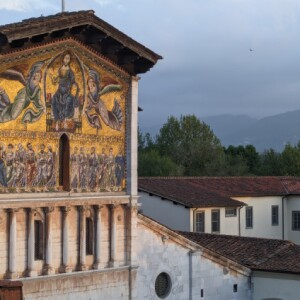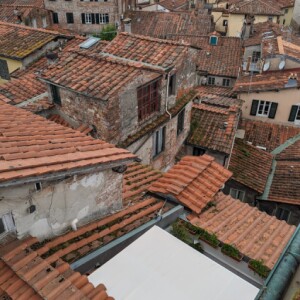Celtic Connections
Navelwort (Umbillicus rupestris) is a common plant across the rain-drenched west of England - the Celtic fringe as it is sometimes called - and Ireland (less common in Scotland, for some reason). It is as happy to grow on the sides of stone walls as it is on the ground, so also called Wall Pennywort (to distinguish it from the invasive water-plant Floating Pennywort). Its names are obvious descriptions of its leaves
My plant identification app is convinced this is it, but I doubt it. I suspect it is another species of Umbillicus, better adapted to the hot dry Tuscan summer (that we are deliberately here in April to avoid). It has found an ingenious way of exploiting the pan tiles: hiding its roots underneath the clay, then growing a flower stem down into the gap below the tile and up into the sun
The facade in the background is the basilica of Saint Fred (OK, San Frediano), who was an Irish bishop of Lucca in the 6th century, and built the first church on the site. The current building was begun in the 12th century and the huge, golden mosaic was added in the 13th and 14th. What a long time ago; how ancient this place is; a few too many tourists is nothing to get too concerned about; these things shall pass. It looked better soon after dawn, with the early light setting the gold on fire (extra)
As well as a bishop, St Fred was a prince, and a hermit, who frequently took off into the hills in the distance for contemplation and prayer. Given - some might say unkindly - to contemplating his navel



Comments
Sign in or get an account to comment.


